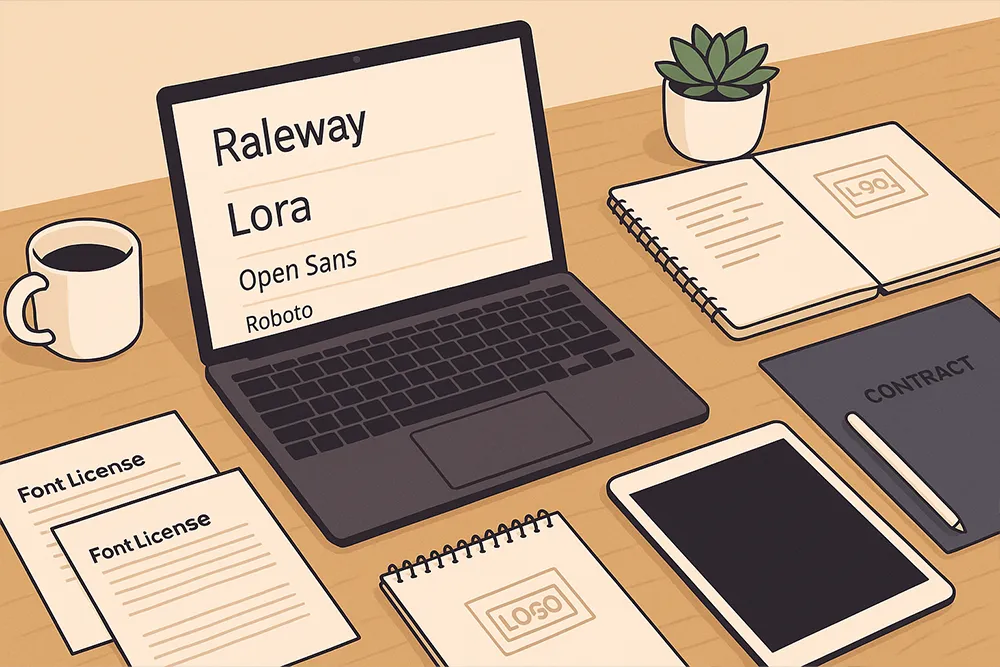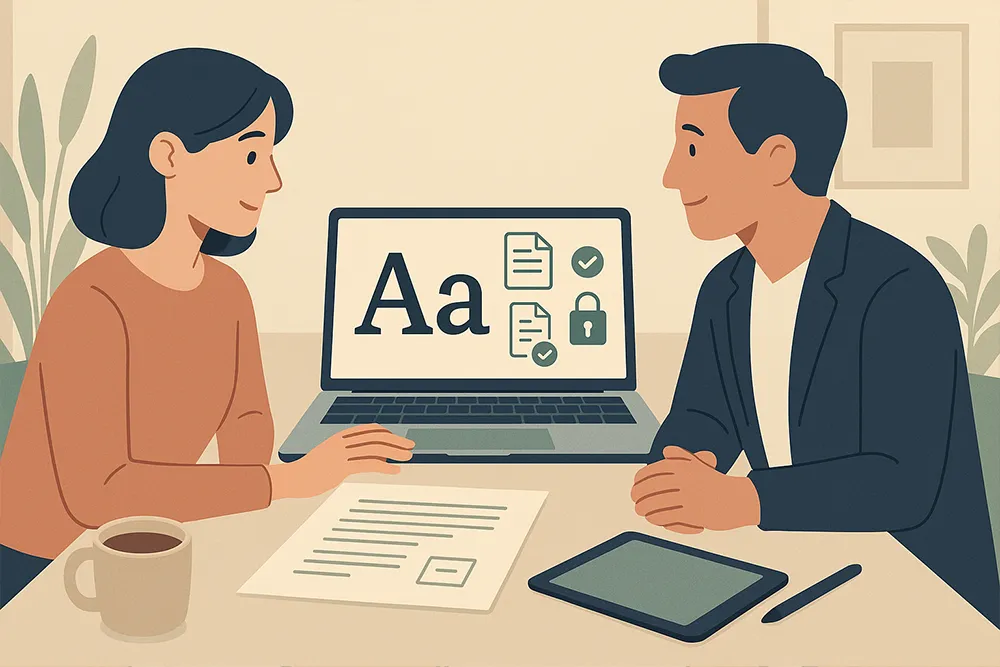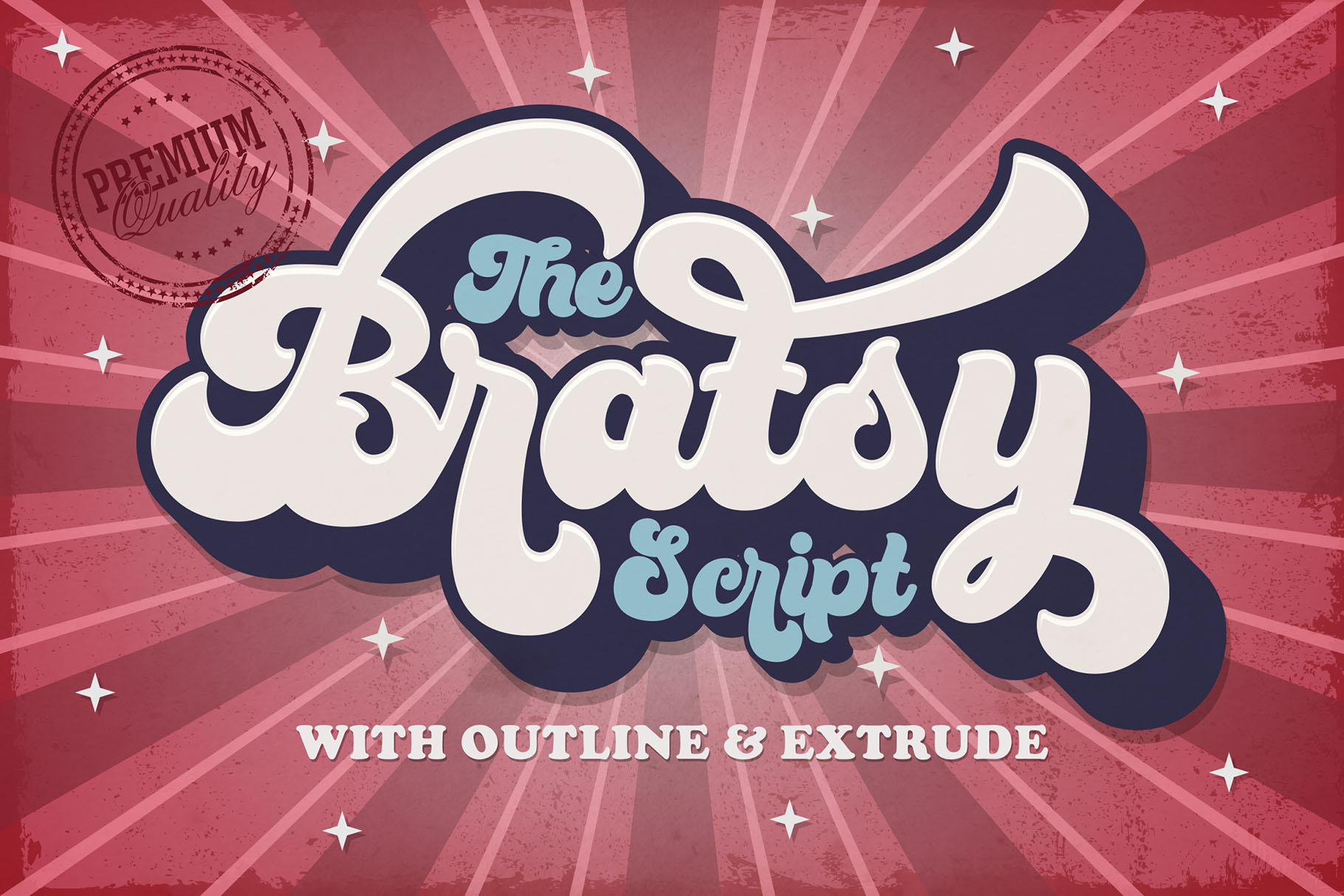
When working on a design project for a client, typography often plays a central role in bringing a brand to life. But here’s a detail many designers overlook: font licensing. Just because you downloaded or purchased a font doesn’t mean you—or your client—can use it however you want.
Improper font use can lead to legal trouble or financial loss, especially in commercial projects. This guide will walk you through everything you need to know about licensing fonts for client work and how to upsell extended or corporate licenses when necessary.
A font isn’t just a design asset—it’s software. When you acquire a font, you’re not buying the font itself but a license to use it under certain conditions.
Each license has specific terms, such as the number of users, allowed projects, or impressions. Always read the EULA (End-User License Agreement) to understand what’s permitted.
📌 Tip: This article by Monotype provides a deeper breakdown of licensing types.
This is a common dilemma. In most cases, the end user should hold the license, especially if the client will continue using the design long after your involvement ends.
Whichever route you take, make sure the license terms allow third-party usage if you’re working on behalf of someone else.
Most clients assume a font license is one-size-fits-all. That’s far from the truth.
Imagine a startup using your logo design with a standard desktop license on their website, ads, and app UI. That’s a clear violation of the license.
You should upsell extended or corporate licensing if:
This is where you offer value and protect your client.

Clients may not care about font licensing—until they’re sued. Your role is to educate without overwhelming.
Try this:
“Just like photos, fonts come with usage rights. For your brand’s usage across print, web, and app, a standard license won’t cover everything. I recommend a corporate license to ensure you’re fully protected.”
Keep it simple, legal-sounding, and client-focused.
| Scenario | Font Usage | Required License |
|---|---|---|
| Logo + Stationery | Static design | Desktop |
| Website (live text) | Embedded fonts | Webfont |
| Mobile App UI | Fonts in app build | App License |
| Company-wide usage | Multi-user/agency | Corporate/Extended |
| Ads with wide reach | Mass distribution | Extended |
A corporate license may cost more upfront, but it offers long-term peace of mind. It:
👉 On FigureeStudio.com, most fonts offer a corporate license option starting from $249. Compared to potential fines or redesign costs, it’s a smart investment.
If you’re a designer or agency, here’s how you can include licensing as part of your upsell strategy:
You don’t have to sound like a lawyer—just a smart, responsible designer.
When working with versatile fonts, scalability across various platforms is crucial. Some fonts are designed to support web, app, print, and multi-language usage out of the box.
We recommend checking out:
A futuristic techno font with multi-platform licensing. Great for apps, gaming UI, or streaming brands.

Font licensing isn’t just a legal technicality—it’s part of your professional responsibility. Educating your clients and offering the right licensing options demonstrates your commitment to the integrity and longevity of your brand.
Next Steps:
 Khaleiyfa – Lovely Modern Script Font
$21 – $1,299Price range: $21 through $1,299
Khaleiyfa – Lovely Modern Script Font
$21 – $1,299Price range: $21 through $1,299 Kidos Marker - Playful Display Font
$21 – $1,299Price range: $21 through $1,299
Kidos Marker - Playful Display Font
$21 – $1,299Price range: $21 through $1,299 The Bratsy Script - Retro Bold Font
$21 – $1,299Price range: $21 through $1,299
The Bratsy Script - Retro Bold Font
$21 – $1,299Price range: $21 through $1,299
Elevate your projects with premium freebies. Fonts, graphics, and templates handpicked for creators like you — download them all today, free forever.
Download Freebies